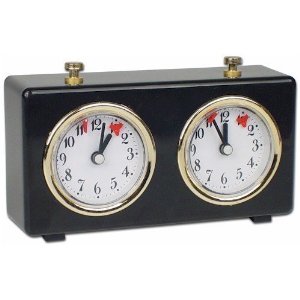
It seems that would be nearly impossible to calculate. Actually, it’s easy.
I use a chess clock like the one pictured here. The left side is real work, the right, not work.
When I start something important, like this post, I punch the left side starting the work clock. If I get interrupted by a non-work call or email, I punch the right clock. When work resumes, I again punch the left clock.
When I get up to make coffee or take the dogs out, right clock. I’m on the left clock when I go back to work on that business plan for my key client.
At the end of the day, sometimes a very long day, I can see on the clock exactly how much time was spent in real work.
Shamefully I admit, there are “busy” days when half the time is on the wrong side of the clock! These are usually the most stressful days too.
Why is that? If most of the day is spent “not” working, how stressful can that be? The pressure of the work that needs doing builds up.
I don’t measure the time every day. That would be crazy, obsessive. In fact, I seldom do it. But when I find myself falling behind, feeling the stress of deadlines or wondering why I’m not as productive as I’d like; I start the clock.
You might try this technique. You can get a chess clock on Ebay or any toy store. Nice item to have– many business applications. Take one to a meeting and measure “time on topic”.
Here’s the real tricky part. What amount of the work time is actually productive? Is the spent on your monthly report really of value? Does that forecast you spent all day yesterday refining have meaning? What are the chances you will get that big job that took your whole day to quote?
You can’t save time but you can use it better.
